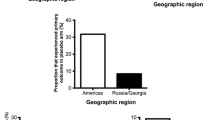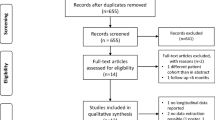Abstract
Mineralocorticoid receptor antagonists (MRAs) have been effective in reducing total mortality in patients with heart failure (HF) and a reduced left ventricular ejection fraction. Due to the finding that aldosterone levels decrease with age, one might question the effectiveness of MRAs in very old patients (≥80 years of age), those at the greatest risk for developing HF with a preserved left ventricular ejection fraction (PEF). However, while aldosterone levels decrease with age, there is also a decrease in the enzyme 11 beta HSD2 levels with age, thereby allowing cortisol to stimulate the mineralocorticoid receptor (MR), which in younger patients with higher levels of 11 beta HSD 2 levels is converted to cortisone which cannot activate the MR. There is also an increase in the expression of the MR in the vascular wall with age. Thus, there is reason to believe that MRAs might be effective in reducing cardiovascular mortality and the incidence of hospitalizations for HF in very old patients with HFPEF. There is also reason to believe that MRAs might favorably affect many of the comorbid conditions associated with HFPEF in very old patients. The safety and efficacy of this hypothesis is currently under investigation in the NHLBI sponsored TOPCAT trial.

Similar content being viewed by others
References
Pitt B, Zannad F, Remme WJ, Cody R, Castaigne A, Perez A, Palensky J, Wittes J (1999) The effect of spironolactone on morbidity and mortality in patients with severe heart failure. Randomized aldactone evaluation study investigators. N Engl J Med 341:709–717
Pitt B, Remme W, Zannad F, Neaton J, Martinez F, Roniker B, Bittman R, Hurley S, Kleiman J, Gatlin M (2003) Eplerenone, a selective aldosterone blocker, in patients with left ventricular dysfunction after myocardial infarction. N Engl J Med 348:1309–1321
Zannad F, McMurray JJ, Krum H, van Veldhuisen DJ, Swedberg K, Shi H, Vincent J, Pocock SJ, Pitt B (2011) Eplerenone in patients with systolic heart failure and mild symptoms. N Engl J Med 364:11–21
Weidmann P, De Myttenaere-Bursztein S, Maxwell MH, de Lima J (1975) Effect on aging on plasma renin and aldosterone in normal man. Kidney Int 8:325–333
Henschkowski J, Stuck AE, Frey BM, Gillmann G, Dick B, Frey FJ, Mohaupt MG (2008) Age-dependent decrease in 11beta-hydroxysteroid dehydrogenase type 2 (11beta-hsd2) activity in hypertensive patients. Am J Hypertens 21:644–649
Funder JW (2005) Rales, ephesus and redox. J Steroid Biochem Mol Biol 93:121–125
Bocchi B, Kenouch S, Lamarre-Cliche M, Muffat-Joly M, Capron MH, Fiet J, Morineau G, Azizi M, Bonvalet JP, Farman N (2004) Impaired 11-beta hydroxysteroid dehydrogenase type 2 activity in sweat gland ducts in human essential hypertension. Hypertension 43:803–808
Krug AW, Allenhofer L, Monticone R, Spinetti G, Gekle M, Wang M, Lakatta EG (2010) Elevated mineralocorticoid receptor activity in aged rat vascular smooth muscle cells promotes a proinflammatory phenotype via extracellular signal-regulated kinase 1/2 mitogen-activated protein kinase and epidermal growth factor receptor-dependent pathways. Hypertension 55:1476–1483
Vasan RS, Demissie S, Kimura M, Cupples LA, Rifai N, White C, Wang TJ, Gardner JP, Cao X, Benjamin EJ, Levy D, Aviv A (2008) Association of leukocyte telomere length with circulating biomarkers of the renin-angiotensin-aldosterone system: the framingham heart study. Circulation 117:1138–1144
Benetos A, Gardner JP, Kimura M, Labat C, Nzietchueng R, Dousset B, Zannad F, Lacolley P, Aviv A (2005) Aldosterone and telomere length in white blood cells. J Gerontol A Biol Sci Med Sci 60:1593–1596
Kai H, Kuwahara F, Tokuda K, Imaizumi T (2005) Diastolic dysfunction in hypertensive hearts: roles of perivascular inflammation and reactive myocardial fibrosis. Hypertens Res 28:483–490
Zannad F, Alla F, Dousset B, Perez A, Pitt B (2000) Limitation of excessive extracellular matrix turnover may contribute to survival benefit of spironolactone therapy in patients with congestive heart failure: insights from the randomized aldactone evaluation study (rales). Rales investigators. Circulation 102:2700–2706
Safar ME, Levy BI, Struijker-Boudier H (2003) Current perspectives on arterial stiffness and pulse pressure in hypertension and cardiovascular diseases. Circulation 107:2864–2869
Savoia C, Touyz RM, Amiri F, Schiffrin EL (2008) Selective mineralocorticoid receptor blocker eplerenone reduces resistance artery stiffness in hypertensive patients. Hypertension 51:432–439
Yoshida C, Goda A, Naito Y, Nakaboh A, Matsumoto M, Otsuka M, Ohyanagi M, Hirotani S, Lee-Kawabata M, Tsujino T, Masuyama T (2011) Role of plasma aldosterone concentration in regression of left-ventricular mass following antihypertensive medication. J Hypertens 29:357–363
Pitt B, Reichek N, Willenbrock R, Zannad F, Phillips RA, Roniker B, Kleiman J, Krause S, Burns D, Williams GH (2003) Effects of eplerenone, enalapril, and eplerenone/enalapril in patients with essential hypertension and left ventricular hypertrophy: the 4e-left ventricular hypertrophy study. Circulation 108:1831–1838
Mottram PM, Haluska B, Leano R, Cowley D, Stowasser M, Marwick TH (2004) Effect of aldosterone antagonism on myocardial dysfunction in hypertensive patients with diastolic heart failure. Circulation 110:558–565
Aldosterone antagonist therapy for adults with heart failure and preserved systolic function (2007) Available at http://www.Clinicaltrials.Gov
Remuzzi G, Cattaneo D, Perico N (2008) The aggravating mechanisms of aldosterone on kidney fibrosis. J Am Soc Nephrol 19:1459–1462
Edwards NC, Steeds RP, Stewart PM, Ferro CJ, Townend JN (2009) Effect of spironolactone on left ventricular mass and aortic stiffness in early-stage chronic kidney disease: a randomized controlled trial. J Am Coll Cardiol 54:505–512
Mosso LM, Carvajal CA, Maiz A, Ortiz EH, Castillo CR, Artigas RA, Fardella CE (2007) A possible association between primary aldosteronism and a lower beta-cell function. J Hypertens 25:2125–2130
Pratt-Ubunama MN, Nishizaka MK, Boedefeld RL, Cofield SS, Harding SM, Calhoun DA (2007) Plasma aldosterone is related to severity of obstructive sleep apnea in subjects with resistant hypertension. Chest 131:453–459
Tomaschitz A, Pilz S, Ritz E, Meinitzer A, Boehm BO, Marz W (2010) Plasma aldosterone levels are associated with increased cardiovascular mortality: the ludwigshafen risk and cardiovascular health (luric) study. Eur Heart J 31:1237–1247
Rajagopalan S, Duquaine D, King S, Pitt B, Patel P (2002) Mineralocorticoid receptor antagonism in experimental atherosclerosis. Circulation 105:2212–2216
Keidar S, Kaplan M, Pavlotzky E, Coleman R, Hayek T, Hamoud S, Aviram M (2004) Aldosterone administration to mice stimulates macrophage nadph oxidase and increases atherosclerosis development: a possible role for angiotensin-converting enzyme and the receptors for angiotensin ii and aldosterone. Circulation 109:2213–2220
Takai S, Jin D, Muramatsu M, Kirimura K, Sakonjo H, Miyazaki M (2005) Eplerenone inhibits atherosclerosis in nonhuman primates. Hypertension 46:1135–1139
Leopold JA, Dam A, Maron BA, Scribner AW, Liao R, Handy DE, Stanton RC, Pitt B, Loscalzo J (2007) Aldosterone impairs vascular reactivity by decreasing glucose-6-phosphate dehydrogenase activity. Nat Med 13:189–197
Rocha R, Funder JW (2002) The pathophysiology of aldosterone in the cardiovascular system. Ann N Y Acad Sci 970:89–100
Callera GE, Touyz RM, Tostes RC, Yogi A, He Y, Malkinson S, Schiffrin EL (2005) Aldosterone activates vascular p38map kinase and nadph oxidase via c-src. Hypertension 45:773–779
Usher MG, Duan SZ, Ivaschenko CY, Frieler RA, Berger S, Schutz G, Lumeng CN, Mortensen RM (2010) Myeloid mineralocorticoid receptor controls macrophage polarization and cardiovascular hypertrophy and remodeling in mice. J Clin Invest 120:3350–3364
Brown NJ, Nakamura S, Ma L, Nakamura I, Donnert E, Freeman M, Vaughan DE, Fogo AB (2000) Aldosterone modulates plasminogen activator inhibitor-1 and glomerulosclerosis in vivo. Kidney Int 58:1219–1227
Swedberg K, Zannad F, McMurray J, Krum H, Veldhuisen D, Shi H, Vincent J, Pitt B. Eplerenone and atrial fibrillation in mild systolic heart failure-results from the eplerenone in mild patients hospitalization and survival study in heart failure (emphasis-hif) study. Lancet Submitted for publication
Shibata S, Nagase M, Yoshida S, Kawachi H, Fujita T (2007) Podocyte as the target for aldosterone: roles of oxidative stress and sgk1. Hypertension 49:355–364
Remuzzi G, Cattaneo D, Perico N (2008) The aggravating mechanisms of aldosterone on kidney fibrosis. J Am Soc Nephrol 19:1459–1462
Edwards NC, Steeds RP, Stewart PM, Ferro CJ, Townend JN (2009) Effect of spironolactone on left ventricular mass and aortic stiffness in early-stage chronic kidney disease: a randomized controlled trial. J Am Coll Cardiol 54:505–512
Palmer BF (2004) Managing hyperkalemia caused by inhibitors of the renin-angiotensin-aldosterone system. N Engl J Med 351:585–592
Ezeckowitz J, McAllister F (2009) Aldosterone blockade and left ventricular dysfunction: a systematic review of randomized clinical trials. Eur Heart J 30:469–477
Juurlink DN, Mamdani MM, Lee DS, Kopp A, Austin PC, Laupacis A, Redelmeier DA (2004) Rates of hyperkalemia after publication of the randomized aldactone evaluation study. N Engl J Med 351:543–551
Pitt B, Anker SD, Bushinsky DA, Kitzman DW, Zannad F, Huang IZ (2011) Evaluation of the efficacy and safety of rly5016, a polymeric potassium binder, in a double-blind, placebo-controlled study in patients with chronic heart failure (the pearl-hf) trial. Eur Heart J 32:820–828
Kolkhof P, Flamme I, Figueroa-Perez L, Baerfacker L, Hartmann E, Rinke M, Schafer S (2006) Cardiac and renal protection by a new mineralocorticoid receptor antagonist in salt-sensitive arterial hypertension. Eur Heart J 27:110
Calhoun DA, Jones D, Textor S, Goff DC, Murphy TP, Toto RD, White A, Cushman WC, White W, Sica D, Ferdinand K, Giles TD, Falkner B, Carey RM (2008) Resistant hypertension: diagnosis, evaluation, and treatment. A scientific statement from the american heart association professional education committee of the council for high blood pressure research. Hypertension 51:1403–1419
Persell SD (2011) Prevalence of resistant hypertension in the united states, 2003–2008. Hypertension 57:1076–1080
Chapman N, Dobson J, Wilson S, Dahlof B, Sever PS, Wedel H, Poulter NR (2007) Effect of spironolactone on blood pressure in subjects with resistant hypertension. Hypertension 49:839–845
Vaclavik J, Sedlak R, Plachy M, Navratil K, Plasek J, Jarkovsky J, Vaclavik T, Husar R, Kocianova E, Taborsky M (2011) Addition of spironolactone in patients with resistant arterial hypertension (aspirant): a randomized, double-blind, placebo-controlled trial. Hypertension 57:1069–1075
Rossi GP, Sacchetto A, Visentin P, Canali C, Graniero GR, Palatani P, Pessina AC (1996) Chyanges in left ventricular anatomy and function in hypertension and primary aldosteronism. Hypertension 27:1039–1045
Pitt B, Reichek N, Willenbrock R, Zannad F, Phillips RA, Roniker B, Kleinman J, Krause S, Burns D, Williams GH (2003) Effect of eplerenone, enalapril, and eplerenone/enalapril in patients with essential hypertension and left ventricular hypertrophy: the 4E -left ventricular hypertrophy study. Circulation 108:1831–1838
Schriffrin EL (2006) Effects of aldosterone on the vasculature. Hypertension 47:312–318
Yamamuro M, Yoshimura M, Nakayama M, Abe K, Sumida H, Sugiyama S, Saito Y, Nakao K, Yasue H, Ogawa H (2008) Aldosterone, but not angiotensin ii, reduces angiotensin converting enzyme 2 gene expression levels in cultured neonatal rat cardiomyocytes. Circ J 72:1346–1350
Keidar S, Gamliel-Lazarovich A, Kaplan M, Pavlotzky E, Hamoud S, Hayek T, Karry R, Abassi Z (2005) Mineralocorticoid receptor blocker increases angiotensin-converting enzyme 2 activity in congestive heart failure patients. Circ Res 97:946–953
Farquharson CA, Struthers AD (2000) Spironolactone increases nitric oxide bioactivity, improves endothelial vasodilator dysfunction, and suppresses vascular angiotensin i/angiotensin ii conversion in patients with chronic heart failure. Circulation 101:594–597
Davies JI, Band M, Morris A, Struthers AD (2004) Spironolactone impairs endothelial function and heart rate variability in patients with type 2 diabetes. Diabetologia 47:1687–1694
Yamaji M, Tsutamoto T, Kawahara C, Nishiyama K, Yamamoto T, Fujii M, Horie M (2010) Effect of eplerenone versus spironolactone on cortisol and hemoglobin a (c) levels in patients with chronic heart failure. Am Heart J 160:915–921
Vasan RS, Demissie S, Kimura M, Cupples LA, Rifai N, White C, Wang TJ, Gardner JP, Cao X, Benjamin EJ, Levy D, Aviv A (2008) Association of leukocyte telomere length with circulating biomarkers of the renin-angiotensin-aldosterone system: the framingham heart study. Circulation 117:1138–1144
Benetos A, Gardner JP, Kimura M, Labat C, Nzietchueng R, Dousset B, Zannad F, Lacolley P, Aviv A (2005) Aldosterone and telomere length in white blood cells. J Gerontol A Biol Sci Med Sci 60:1593–1596
Author information
Authors and Affiliations
Corresponding author
Rights and permissions
About this article
Cite this article
Pitt, B. The role of mineralocorticoid receptor antagonists (MRAs) in very old patients with heart failure. Heart Fail Rev 17, 573–579 (2012). https://doi.org/10.1007/s10741-011-9286-7
Published:
Issue Date:
DOI: https://doi.org/10.1007/s10741-011-9286-7




